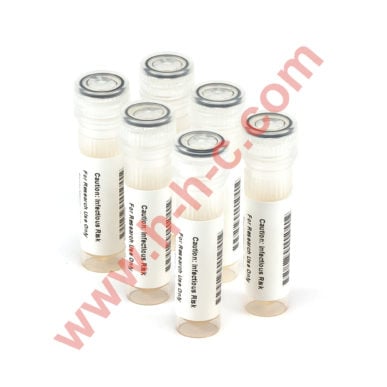Zika (MR-766) Strips (10/tube)
The prices will be displayed on the checkout.
Test the reactivity of antibody sera at a 1:100-10,000 dilution. Test reactivity of monoclonal antibodies from 0.5-50 ug/mL. Nitrocellulose strips were incubated with a 1:100 dilution of a strongly reactive human specimen positive for Zika antibodies. An alkaline phosphatase-conjugated goat anti-human IgG was used as a secondary antibody and NBT/BCIP as substrate solution to develop the signal.
Zika Virus (ZIKV) was first discovered from a Rhesus Monkey in the Zika forest of Uganda in 1947. More recently, there have been outbreaks in Southeast Asia, the Pacific Islands and the Americas. ZIKV has caused a global health concern since infections have been linked to cases of Guillain-Barre syndrome and birth defects. There are two lineages of the virus: The African, and the Asian lineage. Phylogenetic studies indicate that the virus spreading in the Americas is most closely related to the Asian lineage. ZIKV is a member of the virus family flaviviridae and the genus flavivirus transmitted by mosquitoes. It is related to the dengue, yellow fever, Japanese encephalitis, and West Nile viruses. The virus produces 3 structural (capsid [C], premembrane [prM], envelope [E]) and 7 non-structural proteins (including NS1). Studies from other flaviviruses demonstrate an immune response primarily targets the prM, E and the secreted NS1 proteins.
+2° to +8° C.
Product Insert.pdf
Material Safety Data Sheet.pdf
Additional Information
| Product Code | |
|---|---|
| Origin | USA |
| BTN - HC | |
| Organism | |
| Size | |
| KGS | |
| Shipping Conditions |





